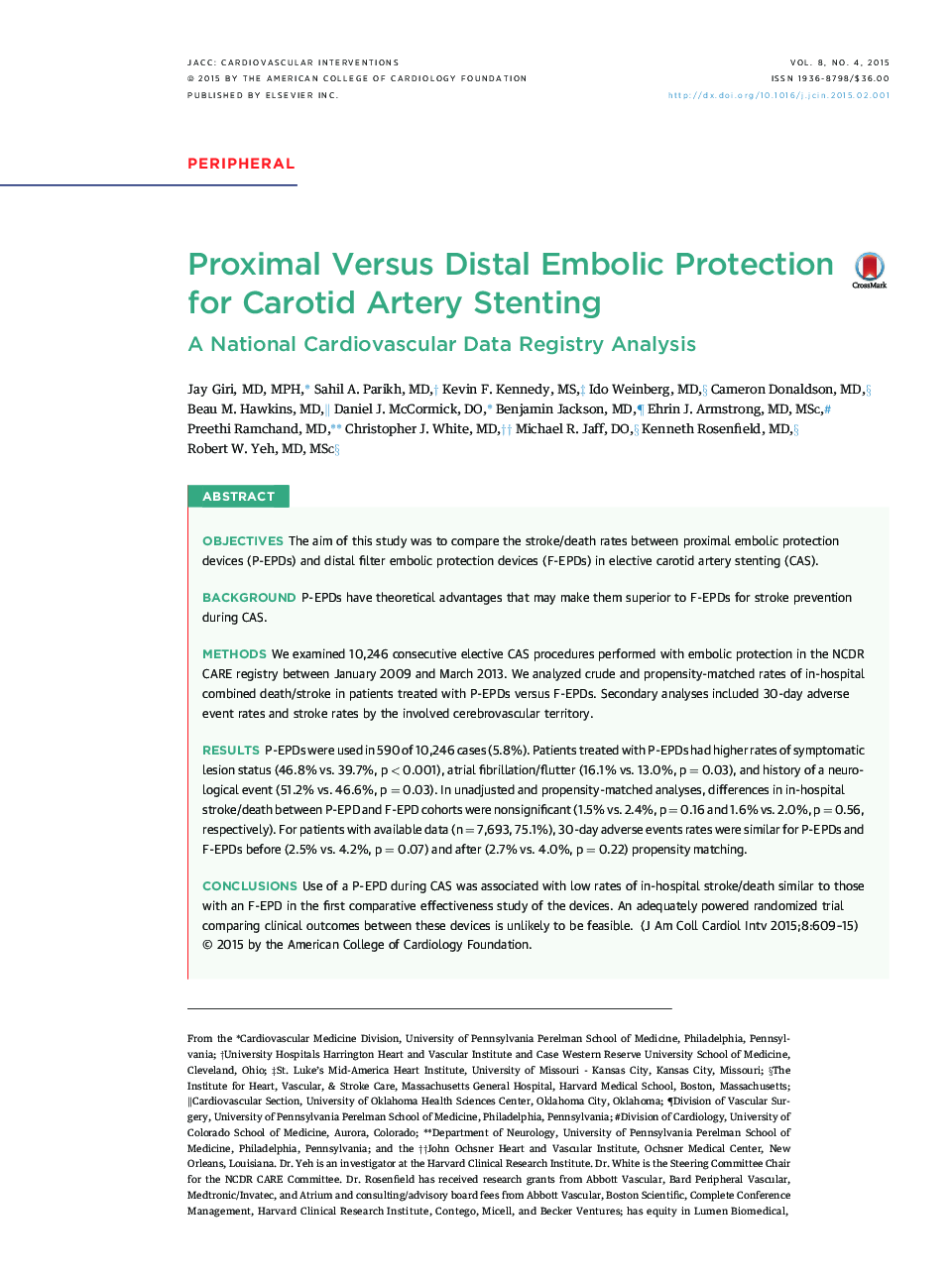| Article ID | Journal | Published Year | Pages | File Type |
|---|---|---|---|---|
| 2939757 | JACC: Cardiovascular Interventions | 2015 | 7 Pages |
ObjectivesThe aim of this study was to compare the stroke/death rates between proximal embolic protection devices (P-EPDs) and distal filter embolic protection devices (F-EPDs) in elective carotid artery stenting (CAS).BackgroundP-EPDs have theoretical advantages that may make them superior to F-EPDs for stroke prevention during CAS.MethodsWe examined 10,246 consecutive elective CAS procedures performed with embolic protection in the NCDR CARE registry between January 2009 and March 2013. We analyzed crude and propensity-matched rates of in-hospital combined death/stroke in patients treated with P-EPDs versus F-EPDs. Secondary analyses included 30-day adverse event rates and stroke rates by the involved cerebrovascular territory.ResultsP-EPDs were used in 590 of 10,246 cases (5.8%). Patients treated with P-EPDs had higher rates of symptomatic lesion status (46.8% vs. 39.7%, p < 0.001), atrial fibrillation/flutter (16.1% vs. 13.0%, p = 0.03), and history of a neurological event (51.2% vs. 46.6%, p = 0.03). In unadjusted and propensity-matched analyses, differences in in-hospital stroke/death between P-EPD and F-EPD cohorts were nonsignificant (1.5% vs. 2.4%, p = 0.16 and 1.6% vs. 2.0%, p = 0.56, respectively). For patients with available data (n = 7,693, 75.1%), 30-day adverse events rates were similar for P-EPDs and F-EPDs before (2.5% vs. 4.2%, p = 0.07) and after (2.7% vs. 4.0%, p = 0.22) propensity matching.ConclusionsUse of a P-EPD during CAS was associated with low rates of in-hospital stroke/death similar to those with an F-EPD in the first comparative effectiveness study of the devices. An adequately powered randomized trial comparing clinical outcomes between these devices is unlikely to be feasible.
